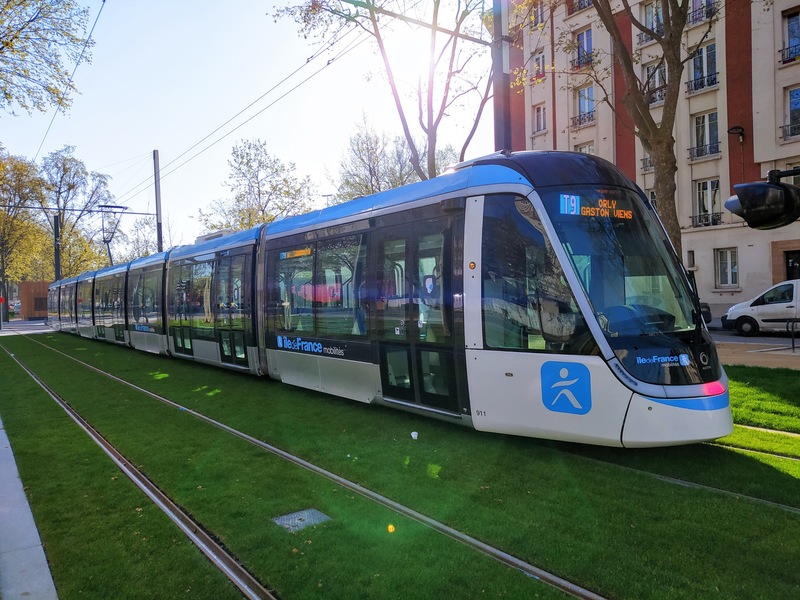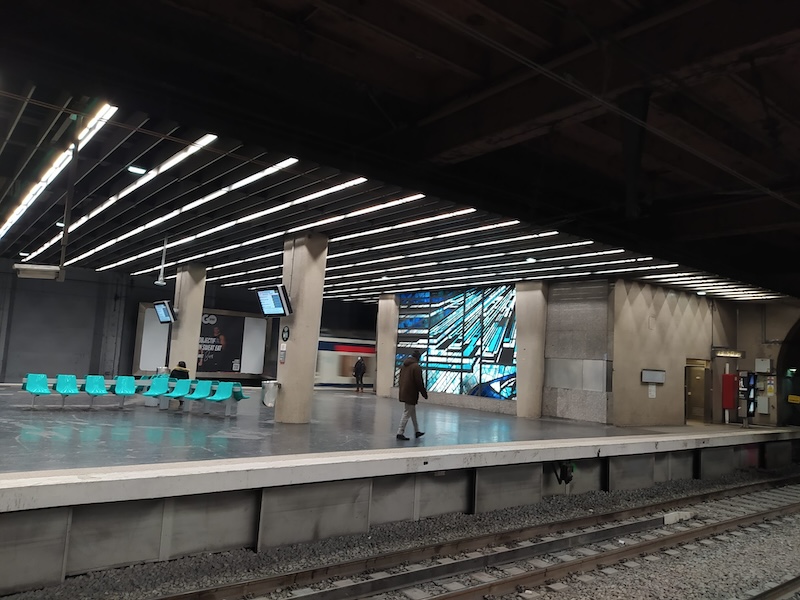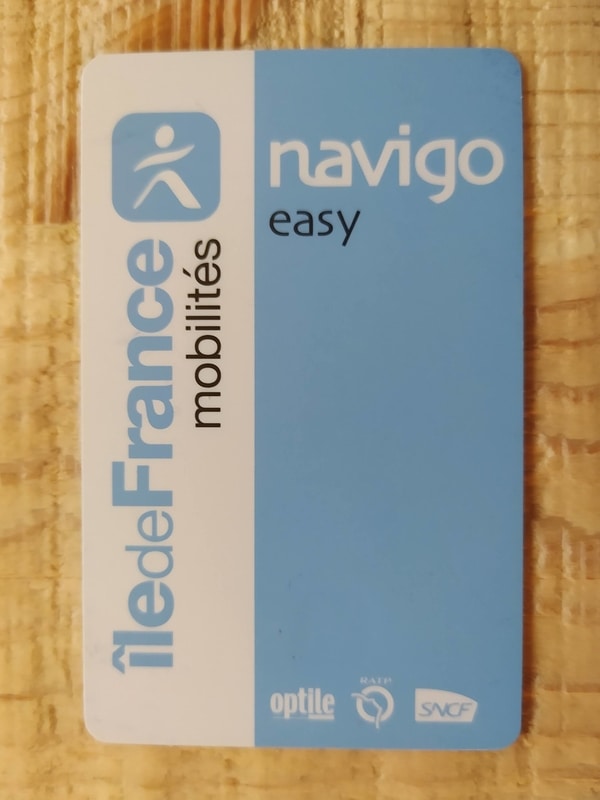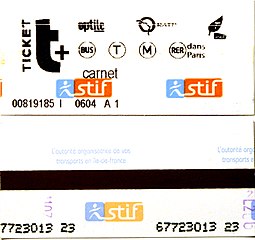As is customary in January, Fabric of Paris is looking back at the previous year, and ahead to the year to come, to see what’s new in the world of transport. Last week, we reported on the new tramways of 2023, the major metro and RER extensions of 2024, and much else besides. But we only briefly touched on an important subject: how we pay for it all. Let’s clear up what can be quite a confusing subject, and talk about what’s changing.
As in most cities, transport in the Paris region is paid for in part by fares and in part by taxes. Changes are happening on both fronts.

How fares work
Parisians who use public transport daily buy a monthly or annual pass. The monthly cost is €86.40; buy a whole year and you get one month free. This increased in January from €84.10. Employers are required to reimburse half the fare, which allows travel across Île-de-France. For London readers, that’s an area the size of Greater London, Kent, Essex, Surrey and Hertfordshire combined.
If you don’t ride every day – for example, if you work from home for some or all of the week – then a pass might not be worth it. The same is true for visitors. A weekly pass exists, but this runs from Monday to Sunday, so might not be much help if you arrive mid-week. The most familiar single ticket is called the t+.
With a t+ ticket, passengers can ride the metro, most buses and trams, and, within the city limits of Paris, the RER. Suburban rail journeys outside the city core require “origin-destination” tickets. Generally speaking, bus and tram journeys can be combined, as can metro and rail, but you can’t transfer from a bus to a train without paying extra. But with the Navigo Liberté + card, which bills riders each month for the previous month’s usage, buses and trams can be combined with the metro and RER. On the other hand, that card still isn’t valid for origin-destination journeys. Are you keeping up?
By and large, trams are treated like buses. But the “express” lines – 11, 12 and 13 – are treated like trains, meaning passengers must buy origin-destination tickets and cannot combine them with buses. Line 4 is treated like any other tramway, despite also being a tram-train line operated by the SNCF.
RER journeys within the city are eligible for the t+. But take the RER to, say, La Défense – outside the city limits – and you’ll need a special ticket. Make exactly the same journey on metro line 1, and the t+ will do fine.

The system has just about made sense so far, since the metro only reaches into the nearest suburbs. But this year, line 14 will go all the way to Orly airport. Commentators had been asking how ticketing would work in that case, since the 14 will be in competition with the expensive OrlyVal shuttle and the OrlyBus. The final decision is as absurd as, having read thus far, you might expect. It seems you’ll be able to travel all the way to Thiais – Orly, the penultimate station, on a t+ ticket, which currently costs €2.15 (up from €2.10 last year) if bought individually. But if you want to travel one stop further, you’ll have to pay €11.50.
The slow death of paper tickets
Paris is slowly moving away from paper tickets. For the t+, this began in 2019 with the introduction of the Navigo Easy, a card which can hold multiple tickets, and – for locals – the Navigo Liberté +. The Easy is a good option for tourists, who can load tickets either individually or, for a 20% discount, in “books” (carnets) of 10. The Liberté + is better for locals, who can sign up to have their bank account debited each month for the previous month’s journeys, all of which are billed at the same 20% discount.

The transition continued with smartphone tickets, first introduced on Android. This spring, promises transport authority Île-de-France Mobilités, these will be available on iPhones too.
In 2021, metro stations began to stop selling individual tickets in books of 10. From September 2023, these have disappeared completely, although individual paper tickets are still available. If you want to ride tramway line 10, which opened in June 2023, you’d better have a card, because the readers are not equipped to scan traditional tickets.
For origin-destination tickets, paper will be around a while longer. In 2022, I reported that the Liberté + was being extended that year to regional rail travel, but that still hasn’t happened. Now, it’s promised “by the end of 2024”.
Origin-destination tickets are complex. Île-de-France Mobilités is looking at replacing them with a zone-based system “in the coming months”. This could revolutionise travel in the region, but it might not be merely positive. Will it still be possible to take the metro to La Défense for only €1.73?
Will we one day be able to access the system directly with a credit card, like in London, Lille or Rennes? Let’s hope so. But it’ll be a while yet.

Olympic fare hike
Visitors to the Olympics and Paralympics face transport ticket prices far beyond the usual. From 20 July to 8 September, the t+ ticket will cost €4. The weekly pass, normally €30.75, will cost €70. But monthly and annual passes and the Liberté + are untouched. The idea is that only visitors will pay the extra costs, as locals will either have passes or be able to stock up in advance.
Why is this money needed? Well, the transport offering is set to increase by 15%, costing €200 million. The price hike is deeply controversial, but would locals prefer an increase in their tax burden?
Other sources of revenue
That brings us to the rest of the transport system’s money pot. In 2022, the Paris region’s transport system recovered 33% of its operating costs from the farebox. Wikipedia’s comparison page should probably be taken with a dollop of salt, but it suggests this is a low figure by international standards. Where does the rest of the money come from?
The single most important source of revenue is a payroll tax called the versement mobilité. Every business in the region with more than 10 people on its payroll pays a percentage of each employee’s salary to this tax. In 2022, this covered 48% of the operating budget of Île-de-France Mobilités. The rest of the money comes from the public purse, mostly the regional government and the municipal government of Paris. Less than 2% comes from advertising.
New city tax
What’s new in 2024 is the city tax. Paris and its suburbs already imposed a tax on any visitor staying overnight. But this year, the region has added two taxes, tripling the existing payment. Where guests in the city proper previously paid a maximum of €5, that maximum – which applies to many apartments on Airbnb – has now risen to €14.95. A small additional tax is to go towards the Société des grands projets: the company formerly known as Société du grand Paris, in charge of building the extension of line 14 and several brand-new metro lines. But most of the increase is allocated to the operational budget of Île-de-France Mobilités.
This brings us to the end of this update on how transport in Île-de-France is funded. Next time, we will look at what’s new in personal transport: driving and active travel. Make sure you’re signed up for email updates if you don’t want to miss it.
 Fabric of Paris
Fabric of Paris